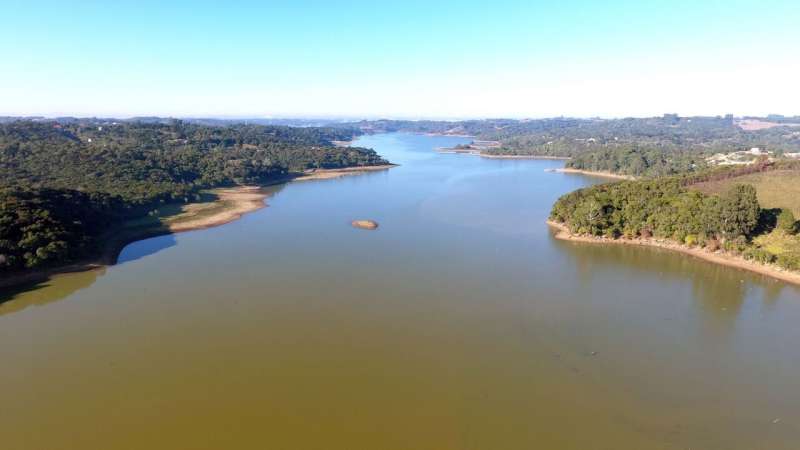User-friendly methods for anticipatory evaluation of water quality in reservoirs

Reservoirs are indispensable for global drinking water supply. To protect them from silting, overfertilization, and pollution, anticipating monitoring of water quality is required. A Brazilian-German consortium led by Karlsruhe Institute of Technology (KIT) has now developed user-friendly measurement and monitoring methods that are particularly suited for regions with limited data availability. Among others, project results confirm the big effect of reforestation in the reservoir catchment.
In case deterioration of water quality is detected at an early stage, countermeasures can be implemented in due time and endangered reservoirs can be preserved much longer. Environmental models help monitor and assess inputs of substances and water quality. Models used so far, however, have required huge data volumes and have been associated with a high technical expenditure. This makes them unsuited for use in regions with a limited data availability. Within the framework of the interdisciplinary research project "Multi-disciplinary Data Acquisition as a Key to Globally Applicable Water Resources Management" (MuDak-WRM), Brazilian and German researchers developed user-friendly and generally accessible monitoring methods, models, and measurement technologies over a duration of three and a half years. For calculating the water balance, i.e. the difference between water uptake and water discharge, and substance inputs from the catchment area, satellite data were used. "We obtained reliable results with a few data only," says Dr. Stephan Hilgert, geo-ecologist at KIT's Institute for Water and River Basin Management (IWG), who coordinated the project.
Automation of Data Processing
Numerous different data have been incorporated in the previously used substance input model. For this reason, the project team concentrated on the two most important input pathways: Substances resulting from erosion of the land surface and wastewater from the urban environment in the catchment. As examples, the reservoir of river Dhünn in North Rhine-Westphalia and the Passaúna reservoir in the State of Paraná in Brazil were studied.
"A very important aspect was automation of processing of the satellite data used for calculating the water balance and inputs of phosphorus and solids," Hilgert explains. Successful automation largely facilitates use of the models and increases their accuracy and transferability to other catchments. The consortium of science, municipal associations, and industrial companies has developed sensors and platforms for constant water quality monitoring as well as an online platform (Sensor Web) for user-friendly acquisition, storage, and evaluation of data.

Effect of Reforestation Was Calculated
Among others, the project results confirm that reforestation of only three percent of the agricultural area in the catchment of the Passaúna reservoir may reduce sediment inputs by up to 26 percent. "Silting of reservoirs and the resulting reduction of their storage capacity will be a major problem in the next decades. Presently, loss of storage volume exceeds its increase," Hilgert says.
Other studies revealed that nutrients bound in the sediment due to climate change may reduce water quality in deeper layers of reservoirs in future. "In the subtropics, a large quantity of phosphorus-binding iron can be found in the soil and, hence, also in the sediment of the reservoir. However, iron only binds phosphorus as long as the water contains a sufficient amount of oxygen. If the water temperature increases and oxygen is lacking for a longer term, phosphorus may dissolve. This may result in a sudden increase in cyanobacteria, i.e. algal bloom, and water quality to suddenly deteriorate," the geo-ecologist explains. To detect this risk in due time, operators of reservoirs should monitor the composition of reservoir sediment in addition to the state of the reservoir and the evaluation of satellite images, Hilgert says.
More information: More about the KIT Climate and Environment Center: www.klima-umwelt.kit.edu/english/
Provided by Karlsruhe Institute of Technology




















